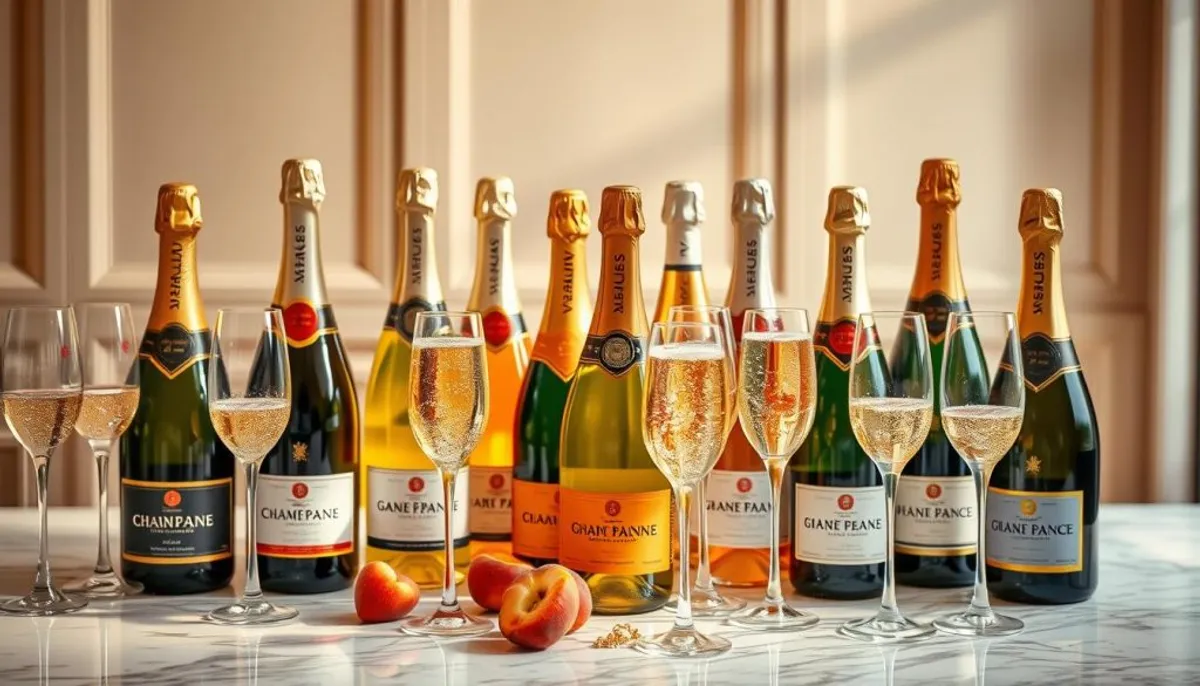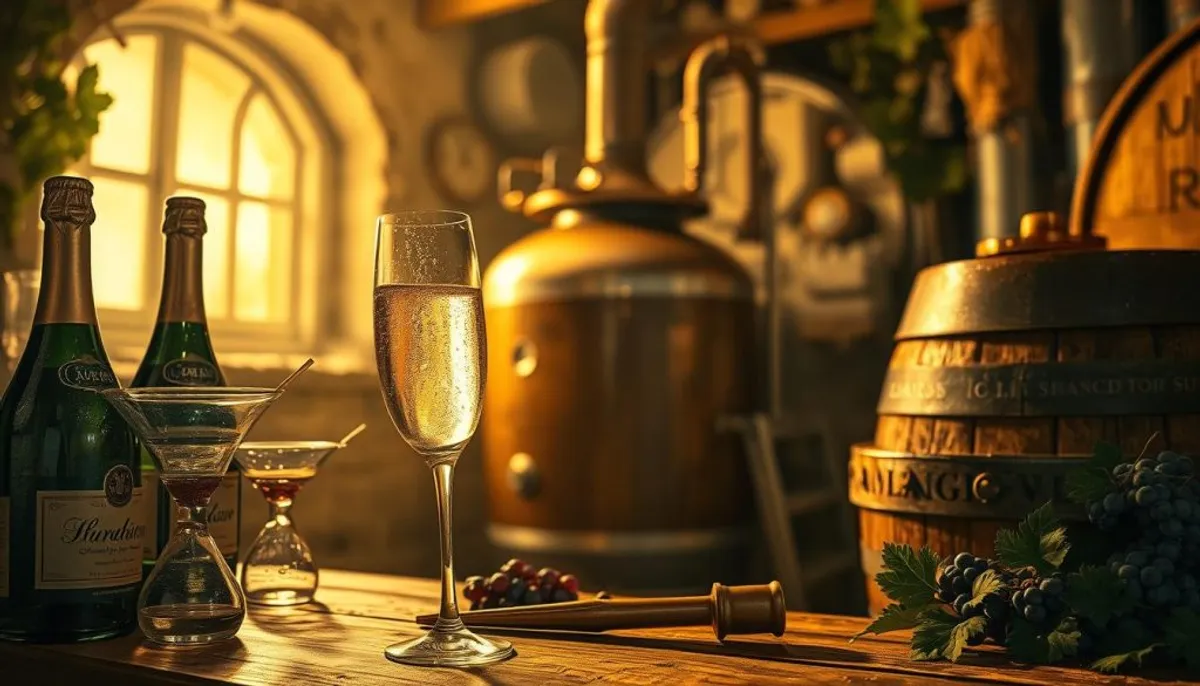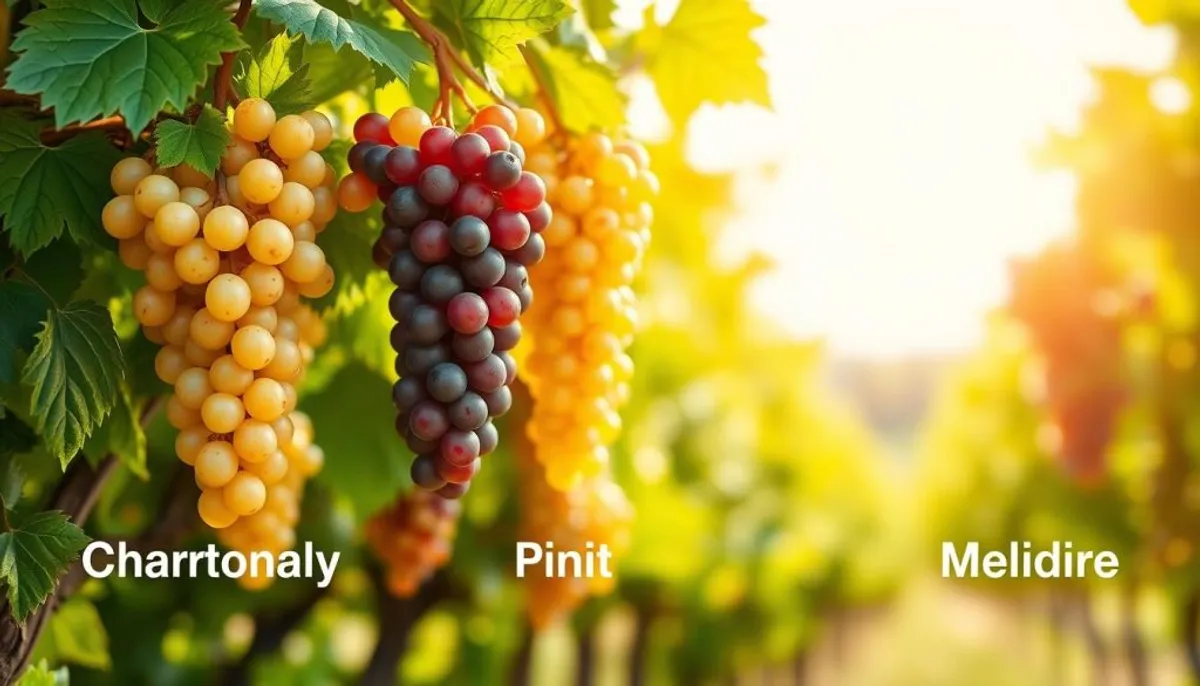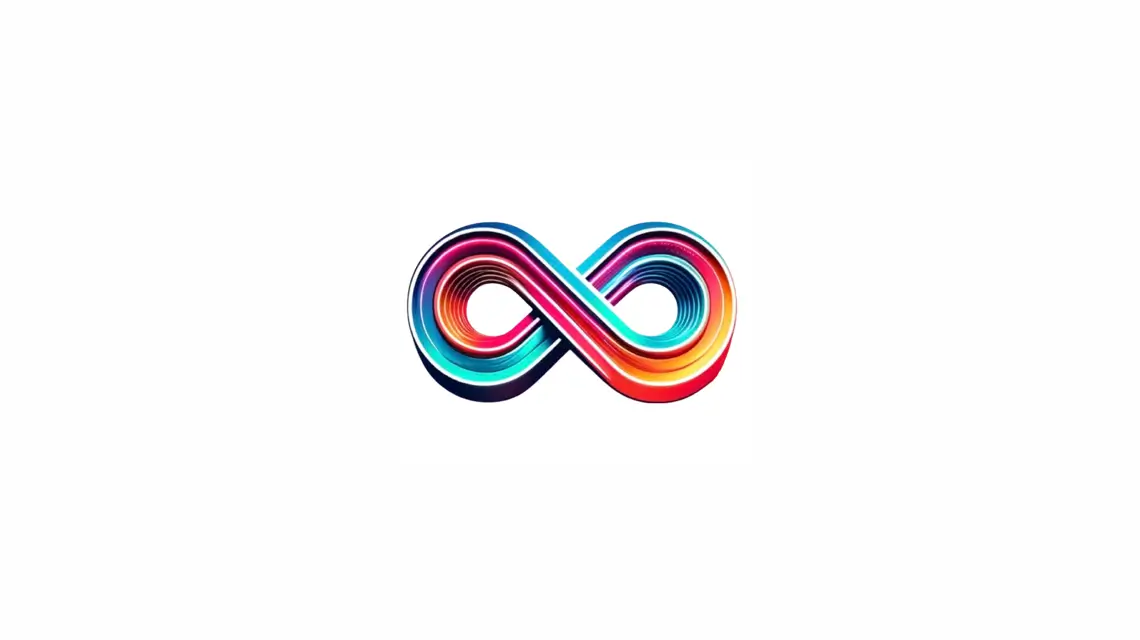Sweet champagne invites you on a journey through the realm of sparkling wines. It spans from the intensely sweet doux to the more refined demi-sec. These wines, with sugar levels between 32 to 50+ grams per liter, are designed for those who seek a dessert-like experience in their glass.

Renowned brands such as Veuve Clicquot and Piper-Heidsieck excel in creating these indulgent sparkling wines. The sweetness in these champagnes is achieved through the dosage process. This involves adding grape must to initiate secondary fermentation. The outcome is a champagne that complements desserts, spicy dishes, and fine cheeses beautifully.
Key Takeaways
- Sweet champagne contains 32-50+ grams of sugar per liter
- Doux is the sweetest category, followed by demi-sec
- Popular brands include Veuve Clicquot and Piper-Heidsieck
- Sweet champagne pairs well with desserts and spicy foods
- The dosage process determines the sweetness level
- Typical alcohol content is around 12% ABV
Understanding Sweet Champagne Classifications
The champagne sweetness scale presents a spectrum of choices for every taste. From the driest to the most indulgent, there’s a champagne for every occasion. We’ll focus on the sweet end, examining doux, demi-sec, and sec champagnes.
Doux: The Sweetest Category
Doux champagne is the pinnacle of sweetness, boasting over 50 grams of sugar per liter. It’s a true dessert in a glass. With more than 121 calories in each 5-ounce serving, it’s a treat for those with a penchant for the sweet. Its syrupy texture makes it a beloved choice for those seeking a rich, indulgent experience.
Demi-Sec: The Popular Choice
Demi-sec champagne finds a harmonious balance between sweetness and acidity. It contains 32-50 grams of sugar per liter, appealing to a wide range of tastes. With 111-121 calories per serving, it’s a versatile option that pairs well with various dishes. Its broad appeal lies in its ability to enhance both savory and sweet flavors.
Sec and Extra Dry: Medium Sweet Options
Sec champagne offers a more nuanced sweetness, with 17-32 grams of sugar per liter. It’s ideal for those who prefer a subtle hint of sugar. Extra dry, despite its name, is slightly sweeter, with 12-17 grams of sugar per liter. These styles provide flexibility in food pairings, catering to diverse palates.
| Style | Sugar Content (g/L) | Calories (per 5 oz) |
|---|---|---|
| Doux | 50+ | 121+ |
| Demi-Sec | 32-50 | 111-121 |
| Sec | 17-32 | 101-111 |
| Extra Dry | 12-17 | 98-101 |
The Historical Evolution of Sweet Champagne
The journey of sweet champagne through history is as captivating as it is complex. Originating in the 17th century, the Champagne region has grown from a mere 1 million bottles in the early 1800s to an astonishing 200 million bottles each year. This transformation underscores the region’s pivotal role in the world of wine.
Over the centuries, the evolution of champagne styles has been nothing short of remarkable. The 1800s were dominated by sweet champagnes, reflecting the tastes of the time. Russian consumers, in particular, preferred their champagne with an astonishing 200 grams of sugar per liter. This era also saw the establishment of iconic houses such as Krug (1843) and Bollinger (1829).
The late 19th century heralded a shift in consumer preferences. Madame Pommery’s introduction of the first brut champagne in the 1880s marked a significant turning point. By 1900, Britain’s demand for champagne reached 10,750,000 bottles, accounting for 40% of global production. Despite facing setbacks like phylloxera and two World Wars, the industry persevered and thrived.
Today, while drier champagnes have gained popularity, sweet champagnes continue to hold their ground. Their historical importance, versatility in pairings, and distinctive flavor profile ensure they remain a cherished part of the champagne world. This enduring appeal makes them a staple in both vintage and modern champagne collections.
| Year | Event | Impact |
|---|---|---|
| 1670 | Dom Pérignon improves champagne method | Enhanced quality and consistency |
| 1880s | Introduction of brut champagne | Shift towards drier styles |
| 1900 | Britain consumes 40% of production | Expansion of international market |
| 21st Century | Champagne becomes widely accessible | Diversification of consumption occasions |
Best Sweet Champagne Selections for Every Budget
Sweet champagne offers a delightful experience for those who enjoy a touch of sweetness in their bubbly. From expensive champagne to budget-friendly options, there’s a perfect bottle for every palate and occasion.
Luxury Sweet Champagnes
For those seeking the pinnacle of indulgence, luxury sweet champagnes deliver unparalleled quality. Armand de Brignac Demi Sec stands out with its rich, creamy texture and complex flavors. This expensive champagne boasts 32-50 g/L of sugar, creating a luscious sweetness balanced by fine acidity.
Mid-Range Options
Value champagne enthusiasts will find excellent choices in the mid-range category. Piper-Heidsieck Cuvée Sublime, crafted by the youngest Chef de Cave in Champagne, Émilien Botillat, offers a harmonious blend of sweetness and freshness. Billecart-Salmon Demi-Sec, with 40 g/L of sugar, presents a refined balance of fruit and floral notes.
Affordable Sweet Champagnes
Budget champagne doesn’t mean compromising on taste. Lanson White Label Sec and Heidsieck & Co Monopole Extra Dry provide delightful sweetness at accessible price points. These options typically contain 12-32 g/L of sugar, offering a subtle sweetness that pairs well with various foods.
| Category | Brand | Sugar Content (g/L) | Flavor Profile |
|---|---|---|---|
| Luxury | Armand de Brignac Demi Sec | 32-50 | Rich, creamy, complex |
| Mid-Range | Piper-Heidsieck Cuvée Sublime | 32-50 | Harmonious, fresh |
| Mid-Range | Billecart-Salmon Demi-Sec | 40 | Fruity, floral |
| Affordable | Lanson White Label Sec | 17-32 | Subtle sweetness |
| Affordable | Heidsieck & Co Monopole Extra Dry | 12-17 | Light sweetness |
Understanding Dosage and Sugar Content
Champagne dosage is pivotal in shaping the final sweetness and flavor of bubbly wines. It involves adding liqueur d’expédition, a blend of wine and sugar, post-second fermentation. This step harmonizes the wine’s acidity and amplifies its fruit notes.
The Role of Liqueur d’Expédition
Liqueur d’expédition is meticulously crafted to achieve the desired sweetness in champagne. Winemakers dedicate months to perfecting the dosage, tweaking it by as little as 0.1 grams per liter. This attention to detail ensures each champagne style retains its distinct character.
Sugar Levels by Category
Champagne varieties span from bone-dry to lusciously sweet, each categorized by its sugar content. Below is a detailed breakdown of sugar levels across different categories:
| Style | Sugar Content (g/L) |
|---|---|
| Brut Nature / Zéro Dosage | 0-3 |
| Extra Brut | 0-6 |
| Brut | 0-12 |
| Extra Dry | 12-17 |
| Sec | 17-32 |
| Demi-Sec | 32-50 |
| Doux | 50+ |
Impact on Flavor Profile
The sugar content profoundly affects a champagne’s taste. Brut Nature reveals the wine’s essence, while Doux provides a dessert-like experience. A standard Brut champagne, with 12 g/L of sugar, balances crispness with subtle sweetness. The dosage also enhances aging potential, leading to flavors like candied nuts and caramel over time.

Notable Sweet Champagne Houses
The realm of sweet champagne is home to many esteemed producers. These champagne brands excel in creating delightful, sweet bubbly. We will explore some of the most notable sweet champagne houses and their offerings.
Veuve Clicquot, a well-known name in champagne, offers the Demi-Sec and Rich Blanc. The Demi-Sec is priced at $70, while the Rich Blanc, a doux-style champagne, costs $65. Both are available through Reserve Bar.
Moët & Chandon, another giant in champagne production, presents the Nectar Impérial Rosé at $72 and the Ice Impérial at $59. These sweet champagnes cater to different tastes and occasions.
Billecart-Salmon, renowned for its quality, produces a Demi-Sec Champagne priced at £43. This champagne balances sweetness with the house’s signature style.
| Champagne House | Sweet Champagne | Price | Style |
|---|---|---|---|
| Veuve Clicquot | Demi-Sec | $70 | Demi-Sec |
| Veuve Clicquot | Rich Blanc | $65 | Doux |
| Moët & Chandon | Nectar Impérial Rosé | $72 | Demi-Sec |
| Moët & Chandon | Ice Impérial | $59 | Demi-Sec |
| Billecart-Salmon | Demi-Sec Champagne | £43 | Demi-Sec |
Other notable sweet champagne producers include Piper-Heidsieck with their Cuvee Sublime Demi-Sec, Laurent-Perrier’s Harmony Demi-Sec, and the luxurious Armand de Brignac Demi Sec. These houses enrich the diverse world of sweet champagnes, providing options for every taste and budget.
Food Pairing Guide for Sweet Champagnes
Sweet champagnes provide a delightful experience when paired with the right foods. This guide explores various champagne food pairing options to enhance your dining pleasure, including the champagne plum benefits that can complement your meal perfectly.
Dessert Pairings
For dessert wine pairing, sweet champagnes truly shine. Doux champagne, the sweetest variety, pairs wonderfully with chocolate desserts and key lime pie. The sweetness balances rich flavors, creating a harmonious taste. GH Mumm suggests pairing RSRV Blanc de Noirs Millésimé with tiramisu, as the champagne’s notes complement the toasted tones of chocolate.
Savory Combinations
Sweet champagnes also work well with savory dishes. Sec champagne enhances the richness of pâté. Rosé champagne pairs nicely with duck, specially when served with a blackberry and port sauce. For spicy Asian cuisine, try a Demi-Sec champagne to balance the heat.
Cheese Selections
Cheese and champagne make an excellent duo. Sec champagne is ideal for cheese pairings, as its sweetness offsets the punchiness of strong cheeses. Consider pairing with aged cheeses, Roquefort, brie, or blue cheese for a delightful taste experience.
| Champagne Style | Food Pairing |
|---|---|
| Doux | Chocolate desserts, Key lime pie |
| Demi-Sec | Spicy dishes, Sushi, Poultry |
| Sec | Pâté, Aged cheese, Fruit tarts |
| Rosé | Duck, Grilled salmon, Roasted chicken |
Remember, champagne food pairing is an art. Experiment with different combinations to find your perfect match. Whether you’re enjoying a dessert wine pairing or exploring cheese and champagne options, sweet champagnes offer versatile pairing possibilities for every palate.
The Art of Serving Sweet Champagne
Serving sweet champagne is an art that elevates the drinking experience. The temperature at which you serve it is critical in unlocking its full flavor potential. For the best taste, chill your sweet champagne between 8-10°C (47-50°F). Freezing the bottle can harm the delicate bubbles and flavors.
The choice of champagne glassware is equally significant. Flutes or tulip-shaped glasses are best for preserving bubbles and enhancing aromas. Brands like Fran Berger Signature Champagne Flutes and Baccarat Mille Nuit Flutissimo are highly recommended.
When pouring, tilt the glass at a 45-degree angle to minimize foam and preserve flavors. Fill glasses no more than two-thirds full, allowing space for aromas to develop. This method ensures you capture the full bouquet of your sweet champagne.
For unfinished bottles, use a champagne stopper to maintain effervescence for a few days. Contrary to popular belief, placing a metal spoon in the bottle doesn’t help preserve bubbles.
| Serving Aspect | Recommendation |
|---|---|
| Temperature | 8-10°C (47-50°F) |
| Glass Fill Level | Two-thirds full |
| Pouring Angle | 45 degrees |
| Storage Method | Champagne stopper |
Remember, sweet champagne pairs wonderfully with various foods. Try it with oysters, smoked salmon, brie, or even chocolate cake for a delightful culinary experience.
Grape Varieties in Sweet Champagne Production
The essence of sweet champagne is rooted in its distinct grape varieties. Three primary types are prevalent in the Champagne region, each contributing its unique flavor profile to the beverage.

Pinot Noir’s Contribution
Pinot noir holds a dominant position in Champagne, occupying 38% of vineyards. This black grape variety is instrumental in adding a robust body and depth to sweet champagnes. It excels in the Aÿ region, renowned for its red fruit notes and full-bodied wines.
Chardonnay’s Role
Chardonnay, a white grape variety, commands 31% of Champagne vineyards. It is celebrated for its elegance and acidity, which are pivotal in sweet blends. The Côte des Blancs area is renowned for its Chardonnay, producing wines with floral and citrus undertones.
Pinot Meunier’s Influence
Pinot meunier, covering 32% of vineyards, is often overlooked but is crucial in sweet champagne production. This grape variety enhances the wine’s fruitiness and approachability. It is predominantly sourced from vineyards near Epernay, contributing significantly to the wine’s balance.
| Grape Variety | Vineyard Coverage | Key Contribution |
|---|---|---|
| Pinot Noir | 38% | Body and depth |
| Chardonnay | 31% | Elegance and acidity |
| Pinot Meunier | 32% | Fruitiness and balance |
The art of blending these champagne grapes is what gives sweet champagne its distinctive flavors. Winemakers meticulously adjust the ratios of each grape variety to craft their desired style. This process yields a diverse array of sweet champagnes, including some of the finest nga champagne brands, each with its own unique character.
Understanding Vintage vs Non-Vintage Sweet Champagnes
Sweet champagne aficionados often encounter a decision between vintage and non-vintage varieties. Vintage champagne originates from grapes picked in a singular, outstanding year. These champagne years are celebrated for yielding riper grapes, which contribute to sweeter flavors. In contrast, non-vintage champagne is crafted by blending grapes from various years, aiming for a consistent taste.
Both styles can evolve into complex flavors over time, yet they differ in their production standards. Non-vintage champagne must mature for at least 15 months. In contrast, vintage champagne necessitates a minimum of 3 years of aging. This longer maturation period imbues vintage bottles with a distinct character.
The spectrum of sweetness in champagne is broad, ranging from the driest brut nature with 0-3 grams of residual sugar per liter to the most indulgent doux with over 50 grams. Non-vintage sweet champagnes typically fall into the demi-sec category, striking a balance between sweetness and consistency.
| Champagne Type | Residual Sugar (g/L) | Aging Requirement |
|---|---|---|
| Non-Vintage | Varies (0-50+) | 15 months minimum |
| Vintage | Typically higher | 3 years minimum |
Whether you lean towards the uniformity of non-vintage or the distinctive essence of vintage champagne, both present delightful sweet options for connoisseurs of bubbly.
Storage and Aging Recommendations
Proper champagne storage is essential for preserving quality and enhancing flavors over time. Whether you’re aging champagne or planning to enjoy it soon, adhering to the right guidelines can significantly enhance your experience. These recommendations are crucial for anyone looking to appreciate the nuances of their bubbly.
Temperature Control
To ensure optimal champagne storage, maintain a consistent temperature around 12°C (54°F) in your champagne cellar. For immediate consumption, store it in the fridge at 7-10°C. It’s important to avoid temperature fluctuations, as they can harm the wine’s quality.
Aging Potential
The aging potential of champagne varies based on its type and quality. Non-vintage champagnes are generally ready to drink but can benefit from 1-2 years of aging. In contrast, vintage champagnes can be aged for 5-10 years or even decades, developing richer flavors and complexity over time, and showcasing their antioxidant properties.
Storage Position
When aging champagne, store bottles horizontally to keep the cork moist and prevent oxidation. This position is crucial for maintaining the wine’s quality and preventing the cork from drying out. For short-term storage, bottles can be kept upright in the fridge.
Remember, proper champagne storage is key to preserving its effervescence and flavor profile. Whether you’re a collector or a casual enthusiast, these tips will help you maximize your champagne experience.
Modern Trends in Sweet Champagne
The champagne market is evolving, with a growing preference for contemporary styles. Younger consumers are increasingly drawn to sweet champagnes. This shift is driving champagne innovations across the industry.
Producers are now experimenting with lower dosage levels in traditionally sweet champagnes. This move caters to health-conscious consumers while preserving the cherished sweetness. For example, Laurent-Perrier’s ‘Harmony’ demi-sec Champagne maintains a consistent dosage of 40 g/L. It balances sweetness with modern tastes.
Another significant trend is the exploration of pairing sweet champagnes with diverse cuisines. These champagnes are no longer limited to desserts. They now complement a wide range of savory dishes, enhancing their versatility. Billecart-Salmon’s Demi-Sec, with 40% pinot meunier, pairs well with both sweet and savory foods.
Limited edition sweet cuvées are also gaining popularity as collector’s items. These unique offerings showcase the latest in champagne innovations. They appeal to enthusiasts seeking exclusive experiences. For instance, Veuve Clicquot’s Rich Champagne is designed to be served over ice. This creates a new way to enjoy this classic beverage.
| Trend | Example | Impact |
|---|---|---|
| Lower dosage levels | Laurent-Perrier ‘Harmony’ | Health-conscious appeal |
| Diverse food pairings | Billecart-Salmon Demi-Sec | Increased versatility |
| Limited editions | Veuve Clicquot Rich | Collector’s appeal |
Conclusion
Sweet champagne presents a delightful exploration of various styles, ranging from the subtly sweet sec to the indulgent doux. Our summary showcases top picks across different price points, catering to a wide range of tastes and budgets. The Veuve Clicquot Ponsardin Brut NV, priced at £54.99, emerges as a premium choice with a 4/5 rating. On the other hand, the Veuve Monsigny Champagne NV at £14.99 offers an affordable entry into the world of bubbly.
Our champagne recommendations span from budget-friendly to luxury options. The Henriot Brut Souverain NV and Taittinger Brut Prestige Rose NV both received perfect 5/5 ratings, priced at £40 and £48 respectively. These selections highlight the quality and diversity found in sweet champagnes and champagne varietals, making them suitable for various occasions and food pairings.
Understanding the sweetness levels is crucial for appreciating sweet champagne. Brut champagnes contain less than 12 grams of sugar per liter, while doux champagnes boast over 50 grams. This spectrum allows for ideal pairings with everything from seafood to decadent desserts. Whether you’re new to champagne or a seasoned connoisseur, exploring sweet champagne offers a flavorful and celebratory journey.
RelatedRelated articles



